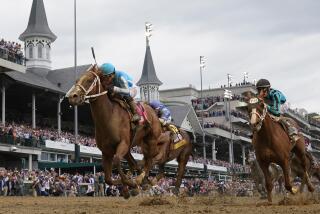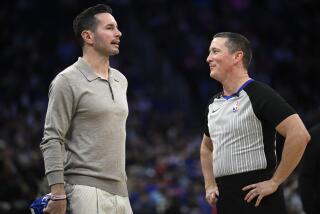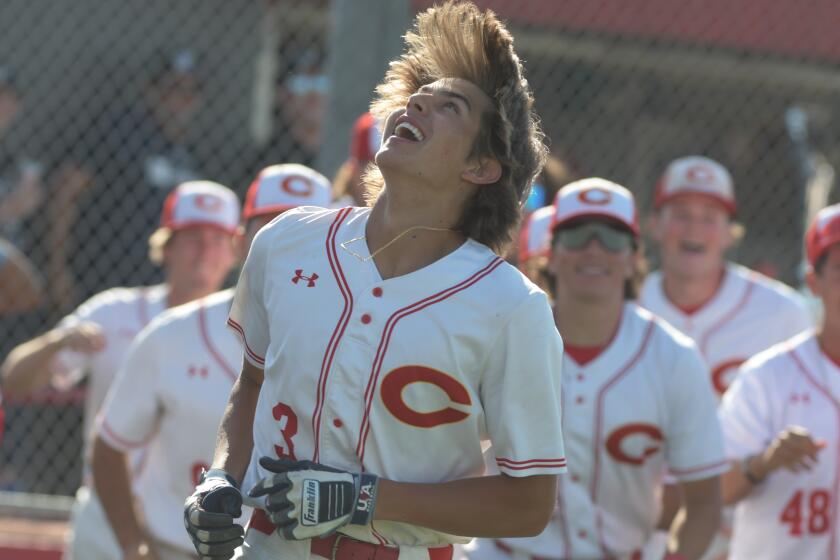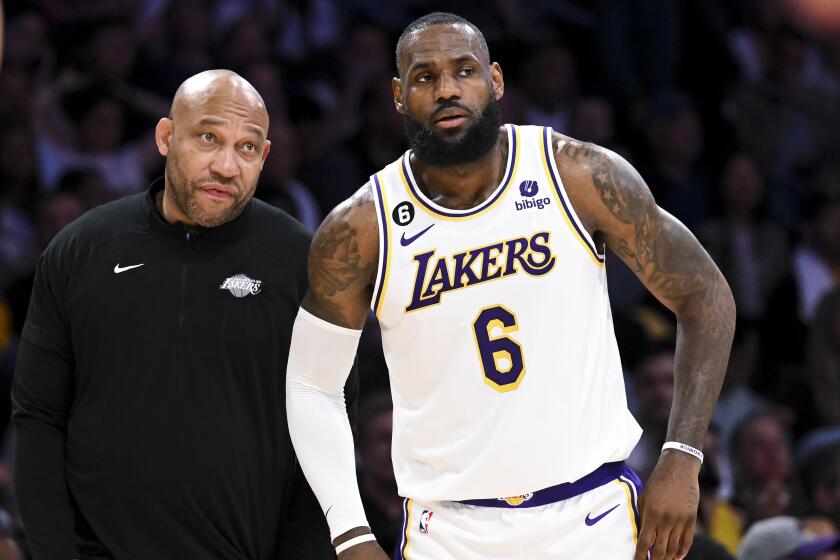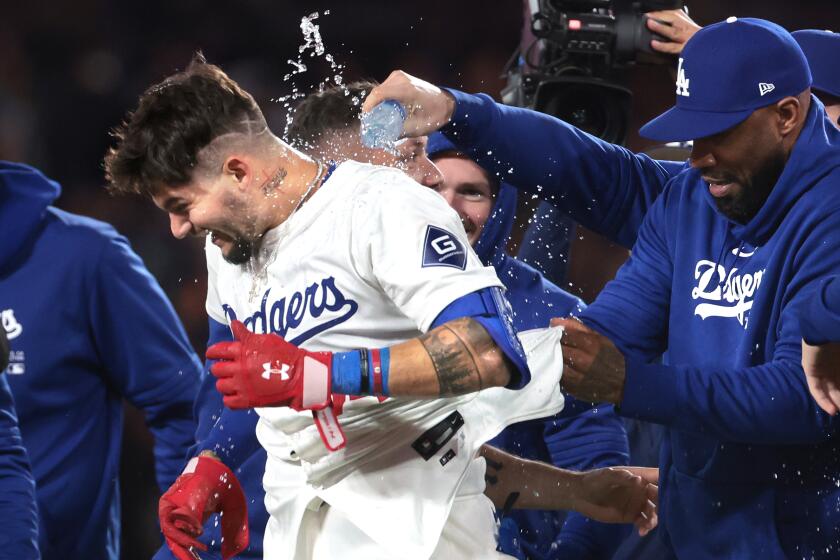All-Star selections of Corey Seager, Kenley Jansen and Clayton Kershaw show Dodgers’ system is bearing fruit
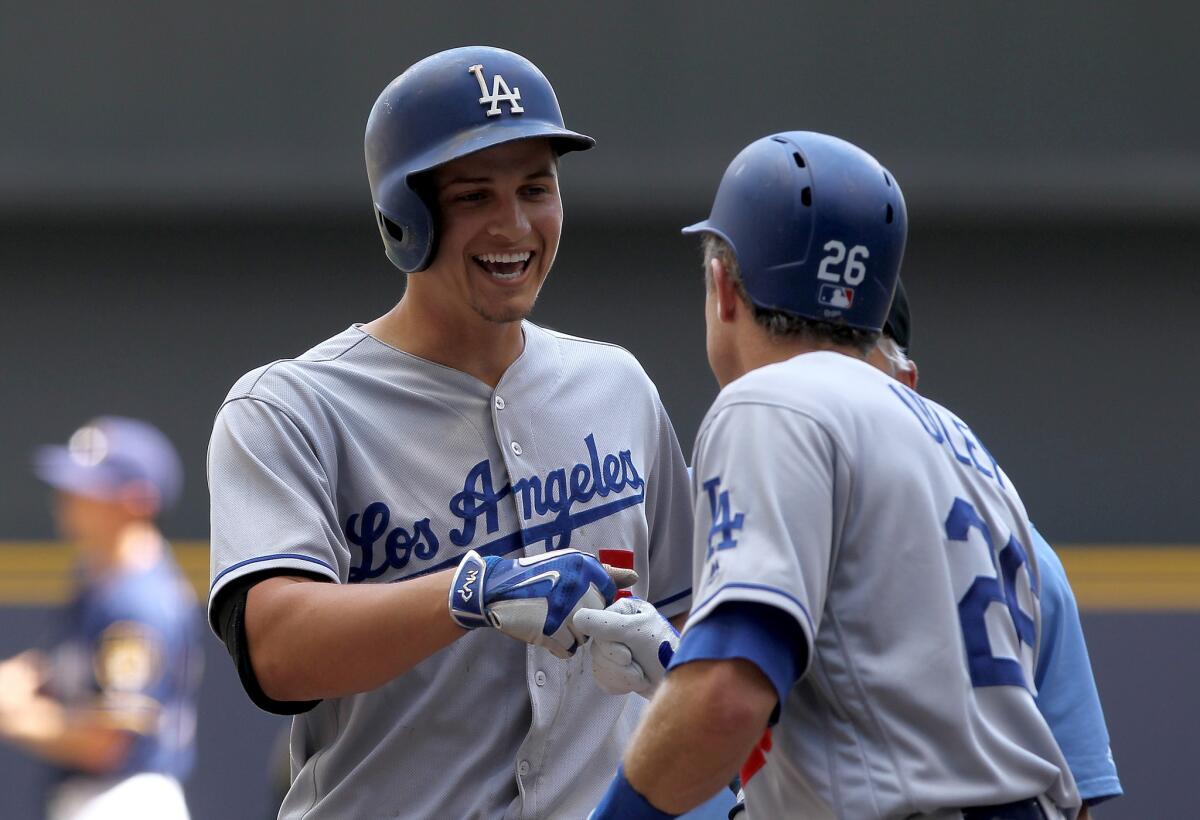
The Dodgers have paid handsomely, and at times extravagantly, in their efforts to revive the first-class pedigree of the franchise. For the first four full seasons of Guggenheim Baseball ownership, the luxury tax has been treated as the cost of doing business.
They’ll spend another quarter-billion on payroll this year, all the while repeating their proclamations about winning through scouting and player development. For an industry that has greeted those proclamations with a chorus of “we’ll believe it when we see it,” this might be a good time to start seeing it.
On Tuesday, when the All-Star rosters were announced, the Dodgers got three players onto the National League team, all voted in by their fellow players and all home-grown: pitchers Clayton Kershaw and Kenley Jansen, and rookie shortstop Corey Seager.
Seager followed Dodgers outfielder Joc Pederson, who made the All-Star game as a rookie last year. Each could have been an All-Star in another uniform had the Dodgers been willing to surrender their best prospects for an elite veteran pitcher.
“When you look at Joc last year and Corey this year, to have young players have that level of success and be recognized by other players around the league really speaks to their ability,” said Andrew Friedman, the Dodgers’ president of baseball operations. “The good thing is, those guys have a chance to play in a lot more All-Star games in a Dodger uniform.”
Mike Trout has played five full seasons for the Angels, and he has been an All-Star in each one. Fans elected him to the American League starting lineup for the fourth consecutive year, and he’ll join Ken Griffey Jr., Mickey Mantle, Joe DiMaggio, Al Kaline and Ivan Rodriguez to start at least four All-Star games for the AL before turning 25.
Trout last year became the first player to win All-Star MVP honors in consecutive years.
“I enjoy the couple days, seeing everybody,” Trout said. “It’s a fun couple days for the fans. My favorite part of the two days is playing. I love playing. I only get to play five innings, but it’s a blast.”
Seager, 22, is the youngest position player to represent the Dodgers in an All-Star game. He said he is particularly proud of making the All-Star team as a shortstop, since all he has heard since high school was that he eventually would have to move to third base.
“It was one of those things that just motivated me to do that much more,” Seager said. “And, now that you’re there, you can kind of celebrate that accomplishment, celebrate all that hard work.”
Jansen, 28, the Dodgers’ all-time leader in saves, called his first-time selection “a blessing.” He said he had thought about taking his kids fishing, or to Disneyland, during the All-Star break, not wanting to be disappointed by missing out again.
“It is difficult, especially when you have a couple of relievers who have to make it because they are the only guy from their squad,” he said. “That kind of held me back the last two years. That’s my own opinion. … I feel like there are guys who deserved to make it this year, but they didn’t. It’s tough for a reliever to make it.”
As revenue sharing and television money enables even small-market teams to retain star players, free agency becomes increasingly inefficient. Of the 10 free agents to sign for at least $80 million last winter, only one — San Francisco Giants pitcher Johnny Cueto — made the All-Star game.
That means the Dodgers are unlikely to sustain long-term success with a credit card rather than a farm system.
“I’m very pleased with where the farm system is,” Dodgers President Stan Kasten said. “It’s produced not just players, but premier players. The fact we have not only quality but quantity is important. You can’t win long-term without it.
“Look at the great Giants organization. Look at the Cubs. They’re home-grown. They had to do five losing seasons to get there, but now they’re there, and they’re spectacular.”
The Dodgers are getting there, slowly. Of their 13 active pitchers on Tuesday, three were home-grown: Kenta Maeda, who gets an asterisk because he jumped from Japan directly into the major leagues, and relievers Jansen and Pedro Baez.
On Tuesday, the Giants’ starting lineup included seven home-grown players. The Dodgers’ lineup included three — and two of those, Maeda and outfielder Yasiel Puig — were expensive international free agents. That makes the success of Seager, Pederson and teenage pitcher Julio Urias all the more important.
“We have to be great at evaluating our own system,” Friedman said.
To Friedman, that means identifying the difference makers among the prospects and keeping them, no matter how loud the calls to swap one for the likes of Cueto, David Price, Cole Hamels or Jose Fernandez.
“In the moment, people want what’s right in front of them,” Friedman said, “without appreciating how happy their future selves are going to be, and the subsequent years of enjoying the performance of really good players.”
In July, but even better in October.
Times staff writers Pedro Moura and Jesse Dougherty contributed to this report.
bill.shaikin@latimes.com
Twitter: @BillShaikin
More to Read
Get our high school sports newsletter
Prep Rally is devoted to the SoCal high school sports experience, bringing you scores, stories and a behind-the-scenes look at what makes prep sports so popular.
You may occasionally receive promotional content from the Los Angeles Times.
